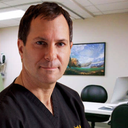Posted underLip Lift q&a
Friendly64989Aug 7, 2023
Hi, in December I had facial feminization surgery and that included a lip lift. My scar has only gotten worse and more red the farther I get from surgery. in the beginning I wasn’t the best at taking care of it. But have really been on top of it for the past few months. It’s really stressing me out with how red and bad it is cause I’m 21 and in college. Is this a hypertonic scar? Will laser help and make it be less noticeable? Is it possible to make it the scar everyone else gets? :(
Answers (4)
From board-certified doctors and trusted medical professionals
Dr. Raffy Karamanoukian, MD, FACS

Dr. Raffy Karamanoukian, MD, FACS
Board Certified Plastic Surgeon
Answer
Dr. Kenneth D. Steinsapir, MD

Dr. Kenneth D. Steinsapir, MD
Oculoplastic Surgeon, Board Certified in Ophthalmology
Answer
Dr. Anna Chacon, MD, FAAD

Dr. Anna Chacon, MD, FAAD
Board Certified Dermatologist
Answer
Dr. Masoud Saman, MD
Dr. Masoud Saman, MD
Board Certified Facial Plastic Surgeon
Answer
More Lip Lift Questions
See all Lip Lift Q&AWE SEND PRETTY
EMAILS
What’s trending? Who’s turning heads? Which TikTok myths need busting? We’ve got you. No fluff, no gatekeeping—just real talk. Get our free, unfiltered newsletter.